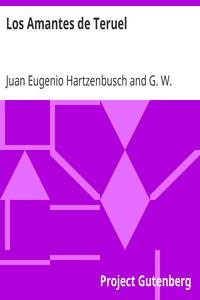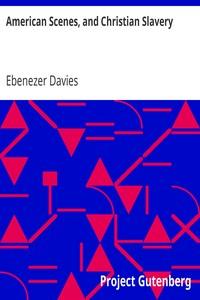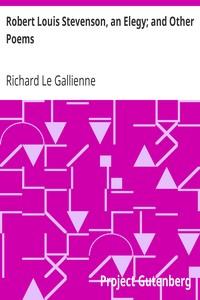|
|
Read this ebook for free! No credit card needed, absolutely nothing to pay.Words: 68096 in 57 pages
This is an ebook sharing website. You can read the uploaded ebooks for free here. No credit cards needed, nothing to pay. If you want to own a digital copy of the ebook, or want to read offline with your favorite ebook-reader, then you can choose to buy and download the ebook.

: Los Amantes de Teruel Drama en cuatro actos en verso y prosa by Hartzenbusch Juan Eugenio Umphrey G W George Wallace Editor - Lovers of Teruel (Legend) Drama@FreeBooksTue 06 Jun, 2023 PREFACE INTRODUCTION BIBLIOGRAPHICAL NOTE TEXT NOTES VOCABULARY INTRODUCTION The old city of Teruel, founded by the Aragonese in the latter half of the twelfth century at the junction of the Guadalaviar and the Alfambra as a stronghold in the territory recently recovered from the Moors, was the fitting scene for the action of the legend.... The pioneer life of the city, the depth of sentiment and singleness of purpose of its Aragonese inhabitants, the crusading spirit that carried to victory the armies of Peter II of Arag?n and his more famous son, James the Conqueror, lend probability to a legend that would ordinarily be considered highly improbable from the point of view of historical authenticity. Stripped of the fantastic details that have gathered about it in the many literary treatments given to it by Spanish writers, the legend may be briefly told. In Teruel, at the beginning of the thirteenth century, lived Juan Diego Mart?nez Garc?s de Marsilla and Isabel de Segura. They had loved each other from childhood, but when it became a question of marriage, Isabel's father opposed the union because of the young man's lack of material resources and because a wealthy suitor, Rodrigo de Azagra, had presented himself for the hand of his daughter. All that the entreaties of the lovers could gain from him was the promise that if Marsilla went to the wars, gained fame and riches, and returned before a certain day, he would receive Isabel in marriage. This Marsilla did; but unfortunately he was unable to return until just after the expiration of the time set. When he reached Teruel, he found Isabel married to the wealthy rival. Disappointed in their hopes after so many years of constant love and continual struggle against adversity, Marsilla died of grief, and Isabel soon followed him; separated in life by cruel fate, they were united in death. Buried in the same tomb, they were later disinterred, and their mummified remains may now be seen in the old church of San Pedro in Teruel. Finally, in the early days of Romanticism, it assumed the dramatic form that has remained most popular down to the present day. On the nineteenth of January of the year 1837 the theatergoing people of Madrid were moved to vociferous applause by a new treatment of the old theme, and a new star of the literary firmament was recognized in the person of Juan Eugenio Hartzenbusch. In his dramatic masterpiece Hartzenbusch eclipsed all the other plays that have dealt with the legend, and more than twenty editions stand as proof of its continued popularity. Besides these many editions of the play, numerous novels, poems, and operas have appeared from time to time. For the most complete bibliography down to 1907 the reader is again referred to that of the official historian of Teruel, Gasc?n y Guimbao. We must now turn our attention to the author of the best dramatic treatment of the legend. At the time of his marriage in 1830 he was still helping his ailing and despondent father in the workshop; more interested undoubtedly in his literary pursuits, but ever faithful to the call of duty. Until success as a dramatist made it possible for him to gain a living for his family by literature, he continued patiently his manual labor. At his father's death he closed the workshop and for a short time became dependent for a livelihood on stenography, with which he had already eked out the slender returns from the labor of his hands. The love of study grew stronger in Hartzenbusch as the opportunity to devote himself to it became greater, so that after he had had several plays presented with considerable success, scholarship began to absorb more and more of his time and the intervals between plays began to lengthen. Literary criticism, editorial work in connection with new editions of the Spanish classics, his duties as assistant and, later, chief librarian of the Biblioteca Nacional, these, with the production from time to time of a new play, made him a well-known figure in the literary life of Madrid. His was the quiet life of the modern man of letters, to whom the incidents of greatest interest are of the intellectual order: the production of a new play, the publication of a new book of literary or scholarly value, the discovery of an old manuscript or the announcement of a new theory, the admission of a new member to the Spanish Academy. Serenely tolerant in his outlook upon life, of gentle disposition and ready sympathy, unaffectedly modest, indifferent to the accumulation of property beyond the needs of his simple mode of living, conscientious in the performance of all his duties, he retained to the end of his life the personal esteem of his many friends. When death put an end in 1880 to the long illness that saddened the last years of his life, his mortal remains were conducted to the tomb with all due ceremony by the Spanish Academy, to which membership had been granted him in 1847 as a recognition of his excellent work as dramatist and scholar. The play as given in this edition differs in many ways from the play as first presented in 1837. More than once the author returned to it, and the numerous editions needed to supply the popular and continuous demand gave him the opportunity to revise it and give it the most artistic finish of which he was capable. Changed literary conditions after Romanticism had run its course are reflected in the more sober dress of the revised play; there are reflected in it, too, the greater restraint, the more scholarly and critical attention to character delineation and literary finish befitting a man who had passed from the warm impulsiveness of youth to the calm rationality of middle age. The student who takes the trouble to compare the text of this edition with that of the first will see many changes: the five acts are reduced to four; some of the prose scenes are now in poetic form; the diction is much improved generally and obscure passages are made clear; some changes in motivation are to be noted, especially in the scenes leading up to the voluntary marriage of Isabel with Azagra; the mother's character is notably ennobled. On the whole, the play has gained by these revisions; what it has lost in freshness and spontaneity has been more than counterbalanced by the more careful delineation of character, improved motivation of action, correctness of diction, and literary finish. The play in its first form is undoubtedly a better example of Romanticism in all its phases, its tendencies toward exaggeration, its crudities of thought and expression, combined with qualities unsurpassed in any other period of literature; in its revised form it is a more artistic production, is still a Romantic play, and one of the best in Spanish literature. Free books android app tbrJar TBR JAR Read Free books online gutenberg More posts by @FreeBooks
: American Scenes and Christian Slavery A Recent Tour of Four Thousand Miles in the United States by Davies Ebenezer - United States Description and travel; Slavery United States Slavery@FreeBooksTue 06 Jun, 2023
|
Terms of Use Stock Market News! © gutenberg.org.in2025 All Rights reserved.






